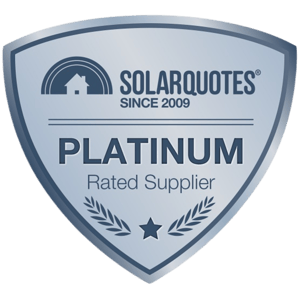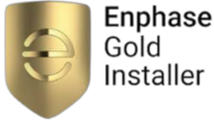Evolution of Solar Inverters: An Innovative Journey

In the grand narrative of solar energy, the unsung heroes—solar inverters—are seldom in the spotlight. But, step by step, through technological brinksmanship and innovation, these unassuming devices have been pivotal in our quest for renewable power. Join us on a journey through time as we unravel the transformative impact of solar inverters, punctuated by leaps and bounds in efficiency, sustainability, and integration with the modern energy landscape.
A Brief on the Evolution's Significance
Before we delve into specific inverter technologies, it's important to understand their pivotal role. Solar inverters are the workhorses that convert the direct current (DC) generated by solar panels into the alternating current (AC) used in our homes and the power grid. Without them, the promise of dawn-to-dusk solar power would remain a mere glimmer.
Traditional Solar Inverters
In the nascent days of solar power, traditional inverters were as simple as could be. Functioning on the basis of pulse-width modulation (PWM), these inverters were the first bridge between solar panels and the electrical grid. They featured one string of panels, connecting all the panels on a single string with minimal switches and controls.
Drawbacks of Yesteryears
These early inverters, while functional, were far from perfect. They operated at the mercy of their weakest link—shading or malfunctions in a single panel would dramatically reduce the entire system's output. Additionally, their inability to track maximum power points in individual panels led to significant power losses.
String Inverters
The second act in the inverter chronicles saw the rise of string inverters. These were a marked improvement, allowing for several strings of panels to be used, dividing the system into multiple channels. This not only improved system efficiency but also made solar operations more flexible and troubleshooting more straightforward.
The Benefits of Strings
String inverters significantly improved the performance of solar arrays by reducing the impact of individual panel issues. They were a massive step forward, allowing more power from a solar array to be harvested under partially shaded conditions.
Microinverters
Microinverters were a disruptive innovation. These little wonders brought the inversion process to the individual panel level. Each panel was equipped with its own microinverter, effectively rendering the solar array a centrally-non-centralized system that could maximize each panel's power output independently.
Decentralization and Efficiency
With microinverters, the risks associated with a single-point failure were mitigated, and the overall system efficiency was improved. Microinverters made shading concerns a thing of the past, as they allowed each panel to perform at its optimal level regardless of its neighbors' conditions.
Power Optimizers
A blend of traditional and modern technologies, power optimizers stepped in to provide a midpoint between group-level inverters and microinverters. Power optimizers, while not inverters in the traditional sense, work in combination with string or central inverters to ensure that individual panels operate at peak capacity.
The Middle Ground
Power optimizers have enjoyed a surge in popularity due to their retrofit capabilities, improved efficiency, and their compatibility with various inverter types. They are an elegant solution to the challenges presented in complex solar arrays without the need for complete system overhauls.
Hybrid Inverters
As the landscape of home energy solutions changed, so did the needs of the solar industry. Hybrid inverters, also known as battery inverters, arose to integrate solar with energy storage systems. This was particularly important as homes began to seek independence from the grid.
Integrating Storage
Hybrid inverters are capable of managing inputs and outputs from both solar arrays and storage systems like home batteries. This not only maximizes self-consumption but also serves as a lifeline during grid outages, marking a significant step towards energy autonomy.
Smart Inverters
The most recent chapter in the inverter saga is the advent of smart or grid-tied inverters. These intelligent devices are part of a larger ecosystem—they communicate with the power grid, adjusting their power output in response to grid conditions and energy demand.
The Grid's New Best Friend
Smart inverters play a crucial role in the evolution of the grid towards a smart grid. Through features like voltage and frequency control, these inverters help stabilize the grid in the face of intermittent renewable power sources, like solar, and ever-changing consumer energy needs.
Conclusion
The story of solar inverters is one of relentless innovation and the persistent pursuit of a sustainable energy future. As we stand on the cusp of the next technological frontier, it's clear that these pieces of hardware, once mere facilitators of energy conversion, are now integral to the fabric of our adaptive, eco-conscious world.
For homeowners and businesses, the message is clear: the inverter you choose is not just a technical choice, but a strategic one that can significantly affect your long-term energy goals. Embracing the latest inverter technologies will not only future-proof your solar investment but also propel the green energy movement forward.
At Smart Energy Answers, we stand at the intersection of innovation and implementation, ready to equip you with the most cutting-edge inverter solutions. Our team of experts is poised to guide you through the solar journey, from exploration to installation. The time has never been more opportune to join the renewable revolution. Make the call to action live in your home—install solar panels or a solar battery today and step into a cleaner, brighter energy future.
%20(1).png?width=265&height=96&name=www.smartenergyanswers.com.auhs-fshubfsSmart%20Energy%20Answers%20Logo%20(HIRES)%20(1).png)

.png?width=514&height=121&name=Tesla%20Powerwall%203%20(new).png)







